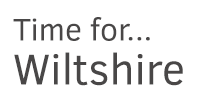Hubert Lancaster Harcourt: Wartime Artist
Corsham
Wiltshire
SN13 9HX

About
6 October – 4 November
Opening Thursday 5 October, 6.30pm
Pound Arts in Corsham presents the work of Hubert Lancaster Harcourt (1911 – 1987), an artist serving in World War II. His work was part of the War Artists Advisory Committee collection, and this exhibition displays other pre-War and wartime work not seen in public before.
Hubert Lancaster Harcourt was born on the 23rd of April 1911 and died on the 23rd of January 1987, a year before the author met and then married his grandaughter. From the moment the author met his daughter and my future mother-in-law, Jenny Otridge, he was told that he was a man all of us would have liked to have met. He would have shared many interests with the author: a love of art, a walker, a musician and an appreciation of craftmanship.
What we have instead is an unusual archive, built up over many years from the papers, photographs and artwork carefully curated by his daughter, Jenny. From this grew an idea. The author was determined to prepare an exhibition partly to celebrate Jenny's 80th year in 2023, but also to bring fresh work ilistrating this period to public view.
Hugh came from a troubled background, including a spell in a Barnados childrens' home from the age of eight to ten. He was apprenticed to a firm of commercial printers and went on to gain a qualification in Art at the Sutton and Cheam Art College in 1934. By 1936, he was married and working as a commercial artist. He joined the 34th Pioneer Corps and served as a Corporal throughout the period of the war. He was stationed in the Faroe Islands and he travelled through France and Belgium during 1944/45. After the second world war he worked as a commercial artist for the rest of his life. But it is his period as an artist before the War and during his time in the 35th Pioneer Corps that this Exhibition at Pound Arts, Corsham from 6th October to 4th November 2023, concentrates upon.
With further research, the author was able to place Hugh's life at this time precisely into the wider economic and social content of the pre-war years. Britain's economic depression in the 1930's was in full flow by the time Hugh had graduated. Work for Artists, whether in commercial or fine art, was in short supply. Most commercial artists of the day would have had difficulty surviving on the small one-off commissions and teaching work that appears to have been Hugh's and many others main employment.
By 1939, the Government was persuaded by a young Kenneth Clark, a curator at the National Gallery in London (he of later television fame with his landmark series of documentaries, "Civilisation") that there was a need to support Artists who found their work drying up following the depression years and the run-up to the War. This resulted in the setting up of the War Artists Advisory Committee within the Ministry of Labour who lobbied for and obtained funding for the full-time employment of Official War Artists. These included such well known artists as Edward Bawden, Evelyn Dunbar, John Nash, Paul Nash and Eric Ravilious: the latter who sadly died during his tenure.
What is less known is that the WAAC also bought paintings of the war either as specific commissions or from other artists who had joined the services and were scattered throughout the theatre of war.
Hugh was amongst them. The Pioneer Corps built runways, set up camps and generally prepared the way for the military services to do their job. This presented opportunities to illustrate a part of the War rarely tackled by other means. His painting, "Jetty in the Faroe Islands" is now in the collection of the Brighton and Hove Museums.
The material in the possession of the family allows us to present an exhibition of Hugh's early works which poignantly show a pre-War, pastoral Britain with its meadows, waterways and pleasant villages. This is contrasted with the later watercolour sketches, obviously quickly produced as he moved through the wartime landscape. In those we find broken landscapes, glowering skies, bombed buildings and the detritus of war. They are both a record and a moving testament to what War is.
The Exhibition is given context by items in his possession at the time such as his practical art books, his paintbox and his sketchbooks. It also includes examples of his commercial work with some beautiful wood printing blocks and calligraphy commissions.
For the author, as someone remote from his time and experience, he finds the work thought-provoking; perhaps in ways Hugh would not have intended. Hugh'slater life was spent ensuring that his skills made him and his family a decent living. However, those who view his work are likely to come to believe that his Art also speaks for itself and was intended to bring out emotion in the viewer.
In the end, the Exhibition is about his family wanting to celebrate an unknown artist, a kind family man and a life well lived, whose work deserves to be given a public airing. The work is of its time and evocative of a lost Britain, a broken Europe and a reminder that Art has the ability open up the internal world of a man and artist, and bring him to life before our eyes again.
Guide Prices
FREE ENTRY
Opening Times
Sorry, this event has passed
You may also like...
 The Pound Arts Centre, Wiltshire
The Pound Arts Centre, Wiltshire
Map & Directions
Recently Viewed
-
A Love Letter to Wiltshire
Type
Exhibition
In celebration of her 20 years in business, Joanna May has produced a new series of paintings for…
-
VERVE Wellness Festival
Type
Festival
VERVE celebrates health, wellness and nature.
Join us for yoga, Pilates, meditation, sound…














 to add an item to your Itinerary basket.
to add an item to your Itinerary basket.
Follow Us
#timeforwiltshire